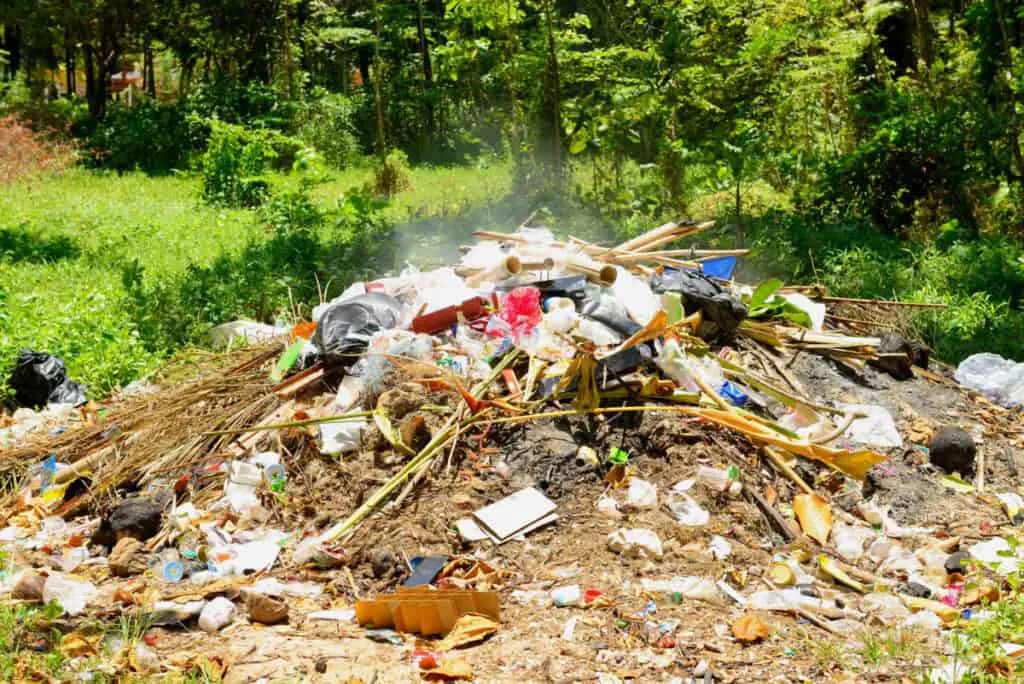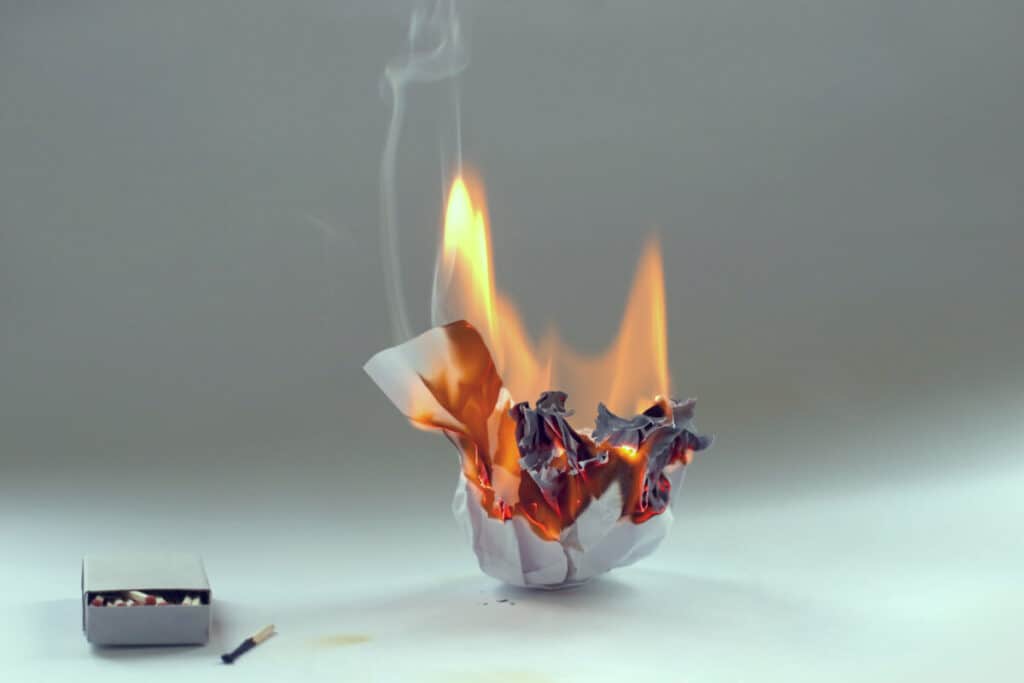
Trash is a big problem all over the world. Most of it doesn’t break down organically, which means it will probably end up in landfills, or worse, oceans. With trash removal being such a big issue, simply burning it may seem like a good idea. However, most of the time it’s not.
The safest trash to burn is unmarked, chemical-free materials that are as organic as possible. Many household items contain unsafe chemicals that can become dangerous toxins when burned, and fires should only be set in safe environments where they won’t burn out of control.
Keep trash out of your fire pit and consider other, more environmentally-friendly options to dispose of trash. Fumes from fires are no joke and can have some serious consequences.
Pros and Cons of Burning Trash
Burning trash can keep waste out of places like the ocean, but if done improperly, can release worse pollutants into the ground, air, and even water.
Fires also have pros and cons. They can be a fun way to pass a chilly night, but inhaling dangerous flames can lead to long-term health consequences. It can also irritate your mouth, nose, and skin. Ash is a lot easier to dispose of than some waste products, but toxic ash can result from burning certain chemicals, which can poison the ground or water it comes into contact with.
Why Not all Paper Burns Equally

Paper may seem like the safest bet when finding kindling for your fire pit, but not all of it is safe to set ablaze.
The inks used to print on paper and in magazines often contain unsafe chemicals that release fumes when burned. Glossy and waxy paper can also release toxins, as can dyed papers. Cardboard creates the same issues as paper and is also considered unsafe to burn.
Hunker
The safest paper to burn is unmarked paper, with no glossy covers or ink that could release toxins. Keep in mind that paper of any kind will release smoke, so only set fires in safe areas where the smoke can escape.
There are consequences to burning chemically safe paper as well. When burning fires in fireplaces or other areas of your house, it’s best not to add any kind of fuel not approved for indoor fire use. Even safer paper can make flames rise very high very suddenly, which, if the fire is not contained properly, can be unsafe. Paper also has a habit of fluttering out of the fire, which could potentially set something else in the area on fire or cause burns.
Cardboard fits into the same category. Anything with ink or a gloss is potentially hazardous, but plain, unmarked stuff can be burned in a safe space.
Dangerous Household Items You Probably Didn’t Know About
There are a lot of household items that may seem safe but actually contain dangerous chemicals. Burning trash as a way to get rid of waste is a somewhat outdated practice. Trash isn’t made of the same components as it used to be. More chemicals are used now to make products stronger, cheaper, and last longer. The unfortunate downside is that products last too long, and don’t break down the way they used to. Plastics have also become much more prevalent in modern manufacturing, especially microplastics.
Avoid using wood pallets to fuel your fire pit, as some wood pallets are treated with chemicals. If you know the wood pallets you have were not treated with potentially toxic chemicals, feel free to burn them. (Source)
Other hazardous items include particleboard, which is made with strong adhesives that can be toxic. Foil can release heavy metals that contaminate ash as well as smoke. Toxic ash can be a real problem as it seeps into the ground and potentially water as well.
Burning plastics in the open releases many toxic gases, including greenhouse gases, into the atmosphere. The solid residue that is left behind is a poisonous ash. These pollutants include dioxins, acids, sulfur dioxide, mercury, polychlorinated biphenyls (better known as BCPs) and heavy metals.
Scienceabc.com
What You Can Burn

The safest disposal items to burn are as organic and unprocessed as possible. Yard trimmings, unmarked paper, and cardboard tend to be safe bets. Food scraps can also be safely disposed of in fires, as long are they aren’t burned in their packaging.
When burning yard clippings, make sure the material is as dry as possible. Damp or green cuttings should be left to dry out, as they don’t burn very well. They can cause lots and lots of smoke without very much fire.
Cotton is not only the exception to the rule but it is generally regarded as a great fire starter! Dryer lint and cotton balls can be burned and used to start fires, especially if they are combined with wax or petroleum jelly.
Most food scraps can be safely incinerated, but don’t always burn very easily unless they are dry. If you want to get rid of food without filling the trash landfills, consider composting as a safer and greener alternative.
How to Safely Burn Trash
If you do have trash that’s safe to burn, don’t just take a match to it! Satisfy your inner pyromaniac in a safe space. Burn your trash in a secured fire pit, or burn barrel. Fireplaces aren’t recommended, as loose pieces may break off and can burn things in your home.
Keep an eye on the weather! The drier the weather, the less safe an open fire is, especially one burning loose articles like trash. If there is a burn ban in your area, don’t burn your trash. Wetter weather is the best for fires, and you should keep a bucket of water on hand just in case!
Before burning any trash or starting any fires, check with your state’s laws about what fires are allowed. Some states ban burning trash of any kind, and the last thing you want to do is incur a fine over trash!
Now that you’ve got your carefully selected trash, are in a safe space, and have secured a fire pit or burn bucket, feel free to sit back and enjoy those toasty flames. You just might want to skip roasting the marshmallows over this one, though.
Related Topics:
If you like the article above, here are some other similar articles you should check out!
